Sunscreen Under Makeup: 5 Essential Steps For Flawless Skin
Smart tips for protecting your face from the sun no matter how elaborate your makeup is!
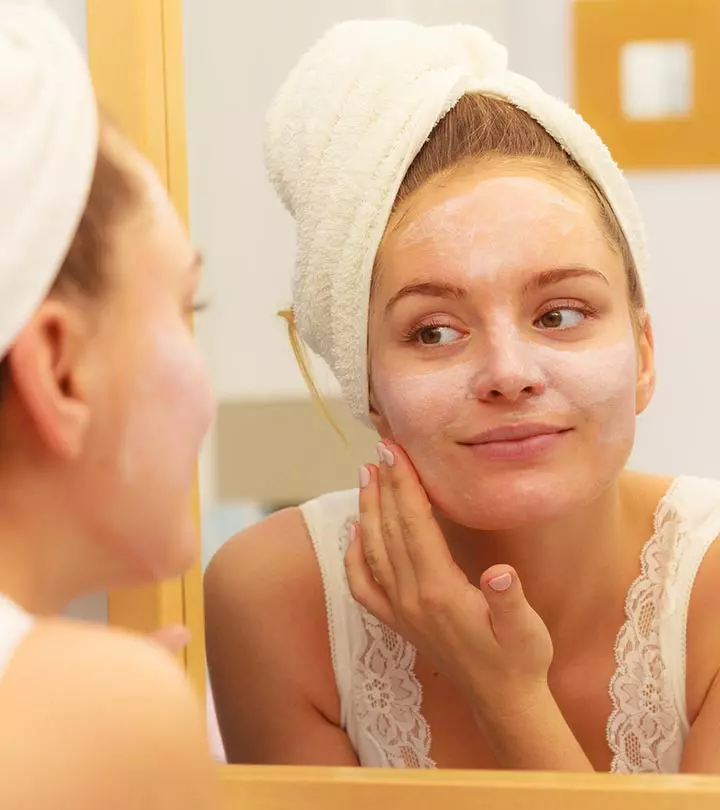
Image: Shutterstock
Let’s get straight to the point. I know that your foundation has SPF, but if you think that has got you covered, you are wrong. Sunscreen is your skin’s ultimate bae. But how can you wear it with makeup? Will it look too cakey? Or make your skin break out? How about reapplying it without taking your makeup off? When it comes to wearing sunscreen with makeup, there are too many questions and concerns. That’s exactly what I’m going to address in this article. Read on.

In This Article
Why Is SPF So Important? How Does It Work?
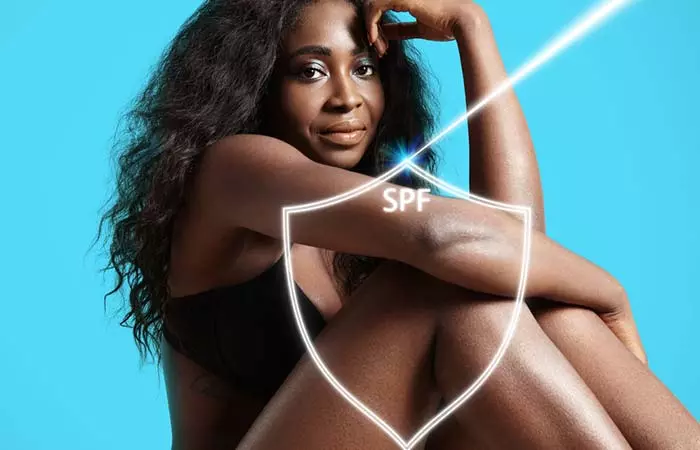
SPF or Sun Protection Factor is a marker of how well your sunscreen can protect your skin from UV rays (UVA and UVB rays). UVA rays can penetrate deep into your skin and cause age spots, wrinkles, and hyperpigmentation, while UVB rays give you sunburn and even cause skin cancer. A sunscreen or sunblock that contains inorganic chemicals can deflect both UVA and UVB rays (1).
According to a cross-sectional study conducted on 31,162 US adults, the participants most frequently stayed in the shade (37.1%) and used sunscreen (31.5%). It was further observed that 34.2% experienced sunburn in 2015 and the prevalence was higher between 19 to 29 years (51.2%).
Most dermatologists recommend a sunscreen lotion that has an SPF between 15 and 50. Anything that’s higher than 50 has not been proven to be more effective than SPF 50. A sunscreen that has SPF 15 can block 93% of UV rays, while one that has SPF 30 can block 97% of the UVB rays (2).
In any case, some UV rays are still going to get through the sunscreen and reach your skin, so the SPF number is an indicator of how long it might take for your skin to turn red under the sun. In other words, a sunscreen with SPF 15 will prevent your skin from becoming red for about 15 times longer than usual. This means, if your skin starts burning in just 10 minutes, SPF 15 can prevent it for about 150 minutes (2.5 hours) (2).
 Did You Know?
Did You Know?So the big question remains – can you wear sunscreen under makeup? How does that work? Keep reading to find out the answers.
Key Takeaways
- Sunscreen containing inorganic ingredients may deflect UVA and UVB rays.
- Use sunscreen with a minimum of 30 SPF.
- Use a moisturizer containing sunscreen under makeup.
- Reapply sunscreen after every two hours to get the best UV protection.
- Use a mineral foundation powder with SPF if you are planning to stay outdoors for long.
Sunscreen Under Makeup: Does It Work?
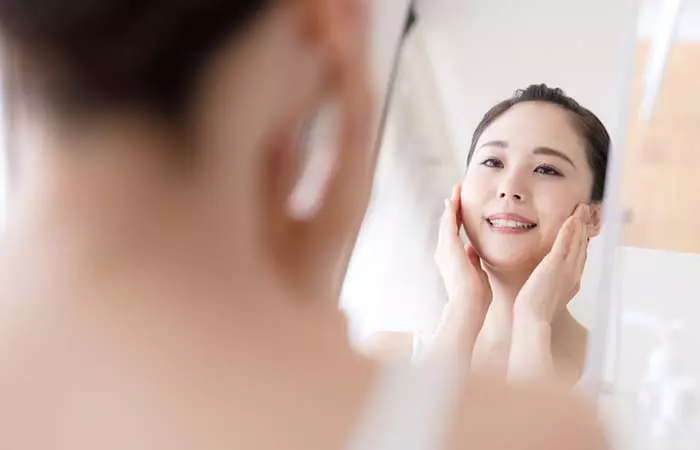
Yes, of course! But you have to be careful about the sunscreen you pick for your face (3). There are two ways you can add an extra layer of sun protection before wearing makeup:
- Apply a moisturizer that has SPF.
- Apply a facial sunscreen.
If you want your sunscreen to work under makeup, always buy a sunscreen that is specifically formulated for facial skin. These sunscreens are more lightweight than traditional sunscreens and will not make your skin look cakey. Also, if you are applying a facial sunscreen, make sure you use a primer on top of it.
While choosing a sunscreen, pick one that has at least SPF 30 and any (or all) of the following ingredients:
- Zinc oxidei An inorganic compound that is insoluble in water and has a white, powdery appearance.
- Titanium dioxidei A naturally occurring dioxide used as a powder in various products like sunscreens, plastics, and paints.
- Avobenzonei An oil-soluble ingredient used in sunscreens to absorb the full spectrum of UV rays.
Zinc oxide and titanium dioxide work as physical sunblocks and reflect UV rays just the way white paint reflects light rays.
They also don’t irritate your skin. It’s just like wearing a mask under your foundation. However, organic chemicals like avobenzone absorb the UV rays and break them down to release heat (2).
You must be wondering, when your foundation already has SPF in it, why do you need an additional sunscreen? Keep scrolling to find out.
Isn’t The SPF In The Foundation Sufficient?
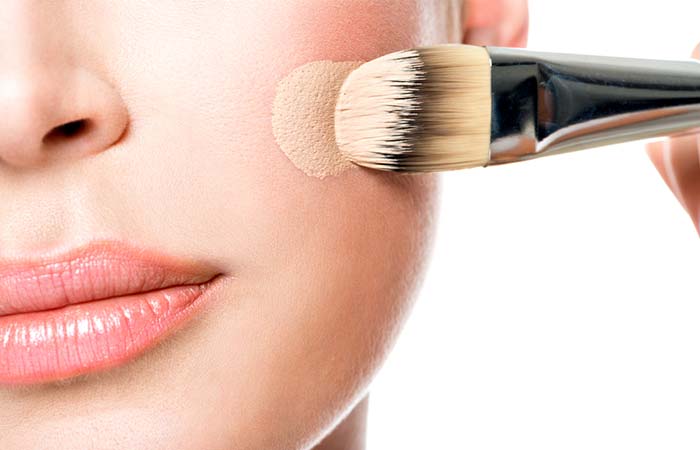
You can’t trust your makeup to protect your skin from UV rays. Why? Because it comes off easily, which affects the coverage. Moreover, when you wear sunscreen under your makeup, it provides a better base for your makeup.
After applying sunscreen and before applying makeup, wait for a few minutes. Let the sunscreen set before going ahead with your makeup. This should be the first step of your daily makeup routine to help protect your skin health. Apply sunscreen generously. Don’t skimp on it.
Now, let’s check out the steps involved in applying sunscreen with your makeup.
A Few Tips To Use Sunscreen With Makeup
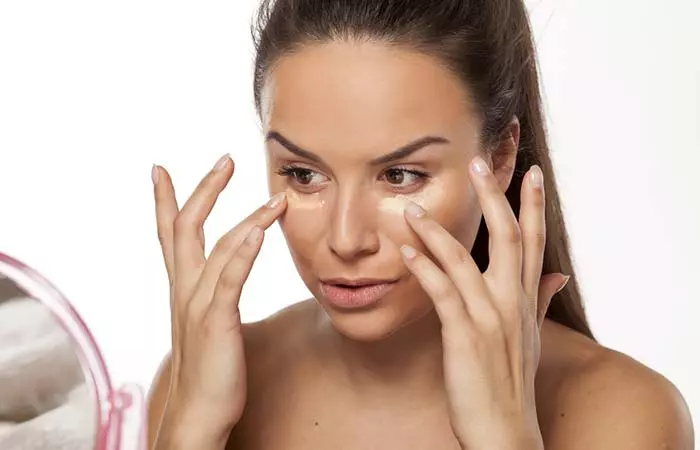
1. Prep Your Skin
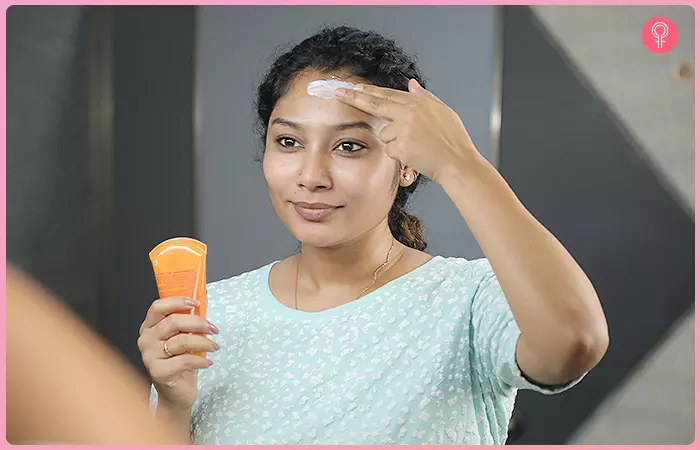
Before you start your makeup routine, you need to prep your skin for that extra safety. Apply sunscreen on your entire face and neck and massage well. Focus on areas such as your forehead, near the hairline, the sides of your cheeks, and your jawline. These areas get major sun exposure. Never start applying sunscreen from the middle of your face because you tend to miss out on the major areas. Once you have applied a coat of sunscreen, reapply it on these areas.
2. Apply Primer
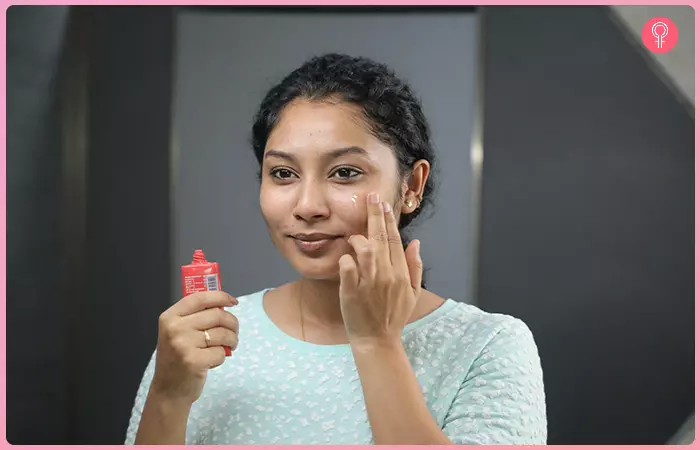
You can always skip this step if you want to. But in case you are applying makeup primer with sunscreen, you need to do it in the correct order. Any skin care product goes underneath the primer. So, you have to apply sunscreen first and then top it off with a primer.
3. Use A Tinted Moisturizer With SPF
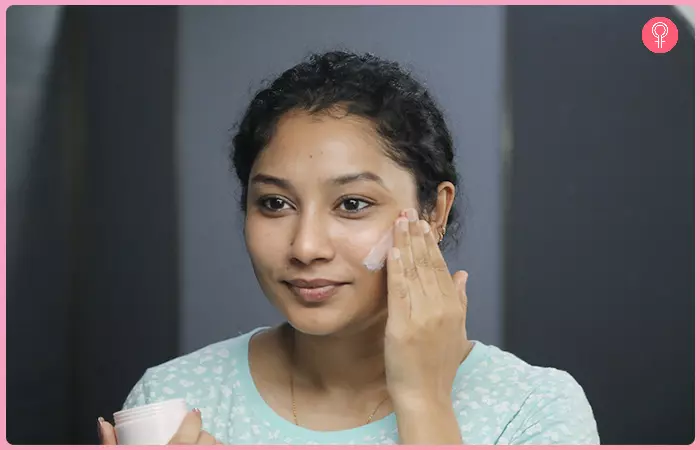
A multitasking tinted moisturizer with SPF is your savior if you have sensitive skin. Just make sure your tinted moisturizer is non-comedogenic and hypoallergenic. These formulas are designed to avoid the clogging of pores, which is a lifesaver if you are prone to breakouts or have oily skin.
You can always apply your heavy foundation with a lightweight formula, such as a BB cream. It is not very difficult to find a BB cream that matches your skin tone and has SPF in it. BB and CC creams help conceal skin imperfections with sheer and natural-looking coverage.
4. Apply Foundation
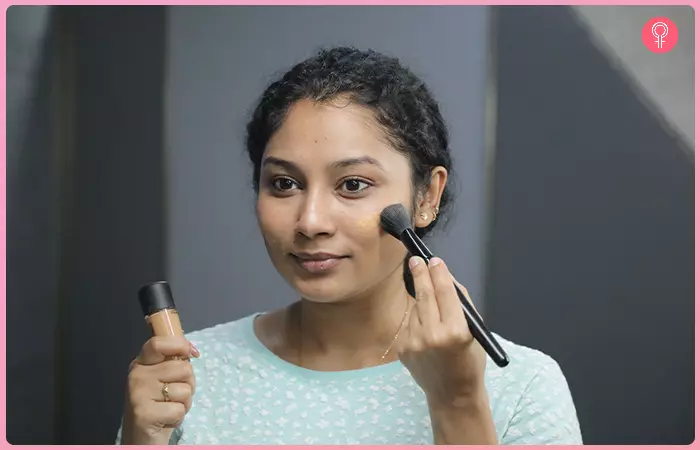
If you are not using a tinted moisturizer or a BB cream, apply foundation all over your face and neck. Blend well and follow it up with the other makeup products.
5. Finish Your Look With A Setting Spray
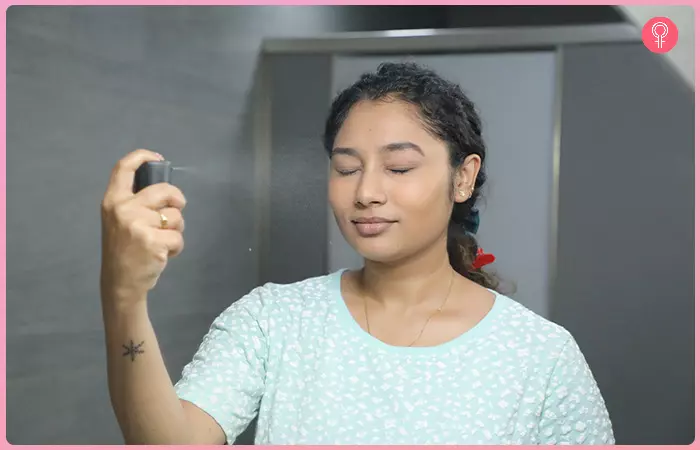
A setting spray with SPF will keep your makeup intact and also add an extra layer of sun protection. You can also use the setting spray while blending your foundation or spray it all over your face and neck after applying your cosmetics.
Now that you are done with your makeup, another concern that you need to address is how you will apply sunscreen over your makeup. Sunscreen needs to be reapplied every 2 to 3 hours (or whatever application time is mentioned on the bottle). But wouldn’t reapplication ruin your makeup? Well, I have got you covered!
How To Apply Sunscreen Over Makeup
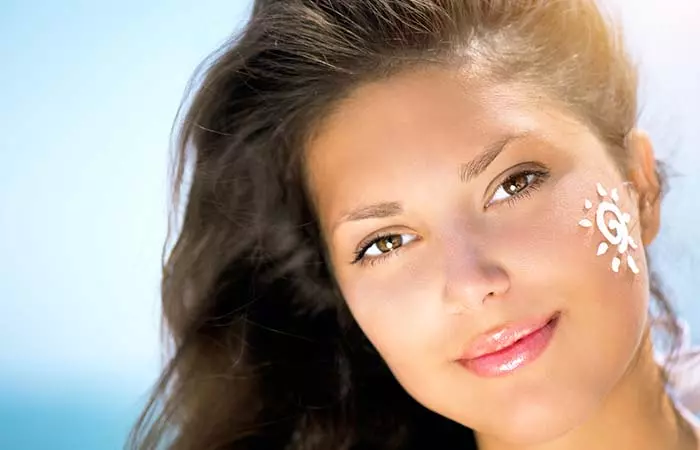
There are plenty of ways to apply sunscreen over your makeup without ruining it. Check them out!
1. Brush Some Powder Over Your Makeup
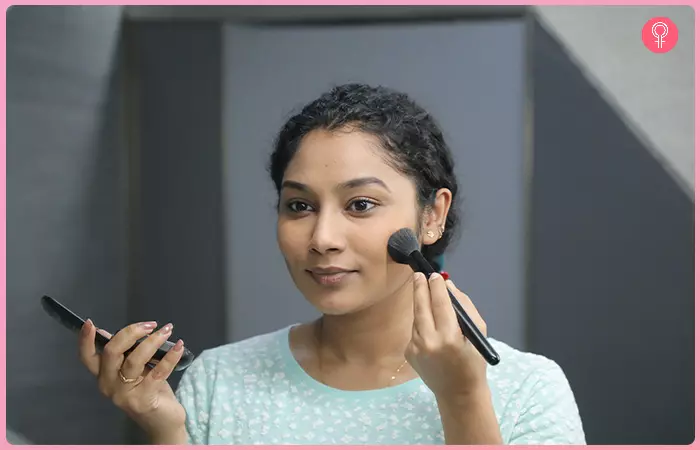
A powder sunscreen helps when you are in no mood to smudge or smear your makeup. Take some powder sunscreen on a big makeup brush and sweep it all over your face and neck. Sunscreen powders are mostly water-resistant and give you a picture-perfect makeup look. These powders can control facial oil and are good for humid days.
 Quick Tip
Quick Tip2. Spray Sunscreen For Face Over Makeup
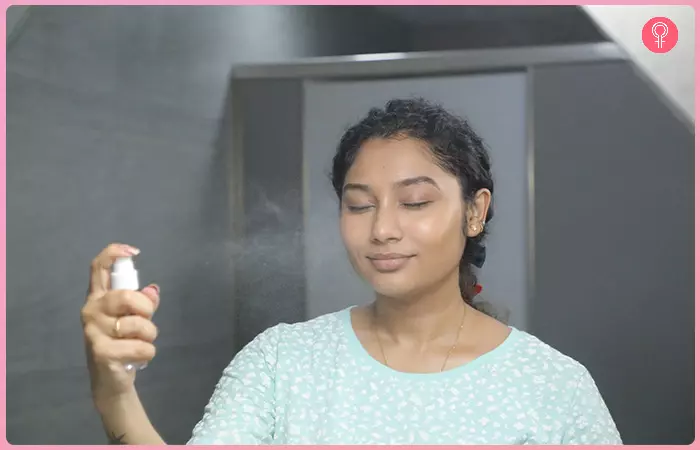
Spray sunscreen is a convenient option, though it doesn’t give as much coverage as lotions and creams. You need to spray it generously to make sure the sunscreen has covered every inch of your face and neck. Do not touch your face until it dries.
Another thing that you can use is a makeup setting spray with SPF. Spray it on your face and wait for it to dry. Top it with some loose powder.
Smitha Deepak, a vlogger, shared a tutorial on reapplying sunscreen over makeup every two hours. She shared an effective method of reapplying sunscreen without disrupting the makeup, which also offered an invisible finish without a white cast. She said, “My favorite, after testing every method, is to use a sun protectant spray. I almost use this as a setting spray (i).”
3. Try A Compact Powder With SPF
If you are someone who is not a fan of liquids and creams because you worry too much about spillage, you can go for a compact powder. There are plenty of options available for compact powders with SPF. Always pick one that offers broad-spectrum sun protection and is water-resistant.
4. Use Mineral Makeup
You can use a mineral foundation powder with SPF in case you are planning to stay outside for long. Mineral makeup powders can cover all areas of your face and neck evenly. They help reduce oiliness and offer broad-band sun protection, thanks to natural minerals like zinc oxide and titanium dioxide (4).
5. Carry A Translucent Powder
A translucent powder with SPF is easy to carry, and you can use it to touch up your face and neck anytime during the day. Compared to other types of powders, translucent powders are extremely light.
Ideally, a sunscreen works the best when applied directly on your skin. But this is not feasible for women who are constantly on-the-go, unless you carry your entire beauty and makeup arsenal with you everywhere!
Infographic: Tips To Use Sunscreen
It is an absolute must to apply sunscreen before you head outdoors. Applying sunscreen may possibly help reduce the risk of premature aging, hyperpigmentation, and skin cancer. Not only should it be used outdoors but indoors as well, as UV rays can penetrate through glass doors and windows.
If you are someone who applies makeup on a regular basis, then check out the infographic below to see how to include it in your routine.
Some thing wrong with infographic shortcode. please verify shortcode syntax
Understanding why sunscreen is important is crucial for your skin’s health and overall protection against harmful UV rays. However, don’t take chances with your skin while stepping out! Sunscreen is not the ultimate solution, and I suggest you wear sunglasses, hats, and full-sleeved clothes to shield your skin from UV rays as much as possible. I hope that this article has helped you understand some ways to incorporate sun protection into your daily sunscreen and makeup routine. Drop your questions and feedback in the comments section below and keep following this space for more updates on skin care.
Frequently Asked Questions
Is sunscreen applied before or after makeup?
Sunscreen is generally applied before applying makeup as the last step of your skin care routine and before the first step of your makeup.
How long after sunscreen can I apply makeup?
You should wait at least for 2 minutes for your sunscreen to sink into your skin before applying makeup.
Can I apply powder after sunscreen?
Yes, but it is generally recommended to wait for a few minutes after applying sunscreen so it gets fully absorbed before applying powder.
Does sunscreen stop skin darkening?
Yes, it can help prevent tanning or skin darkening due to sun exposure by blocking UV rays.
Can I wear primer over sunscreen?
Yes, you can wear primer over sunscreen. However, wait for a few minutes till it gets fully absorbed into the skin.
Can I apply sunscreen directly on my face?
Yes, it is okay to apply sunscreen directly on the face to prevent sun damage and premature aging.
What are some tips for choosing a sunscreen that works well with your skin type and makeup routine?
Choose a sunscreen according to your skin type; for example, if you have oily skin, go for a lightweight, oil-free sunscreen, whereas if you have dry skin, go for a moisturizing one. Consider the SPF of the sunscreen, it is recommended to go for SPF 30. Try to go for a sunscreen labeled as “non-comedogenic” so it doesn’t clog pores.
Can you mix sunscreen with foundation or other makeup products for added sun protection?
No, it is generally not recommended to mix sunscreen with other makeup products as it can dilute its effectiveness and reduce its ability to protect you from sun. Additionally, mixing it can alter the consistency and texture of it, making it more difficult to apply and can lead to breakouts.
What types of makeup products should you avoid when wearing sunscreen?
It is best to avoid using any products that are oil based or contain SPF since oil based products can reduce the effectiveness of a sunscreen and cause it to break-down more quickly.
Illustration: How To ApplyRe-apply Sunscreen While Wearing Makeup
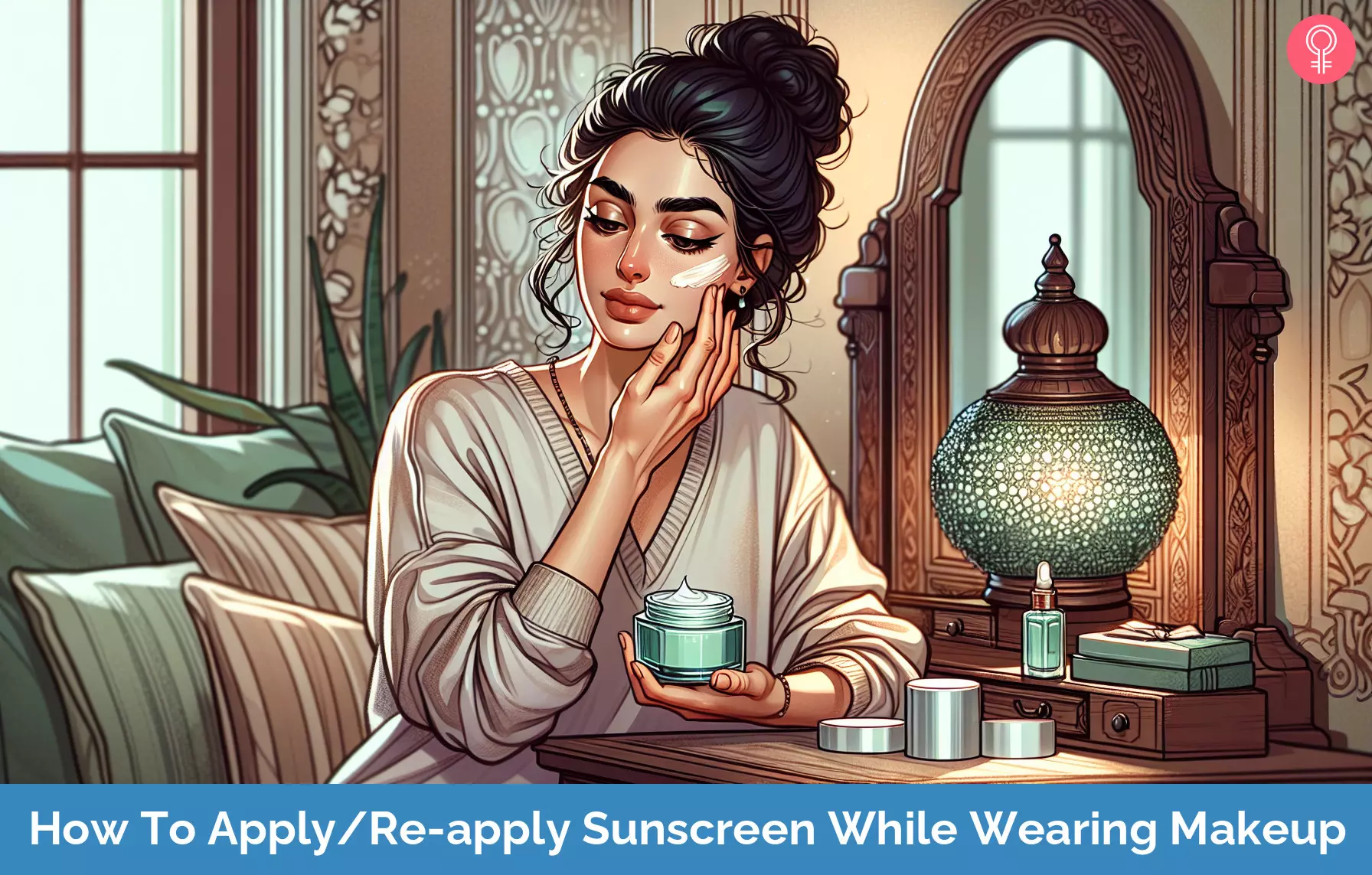
Image: Dall·E/StyleCraze Design Team
Learn how to apply foundation over your sunscreen for a clean look. Watch this informative video to get tips on the best products and techniques to use for the perfect look.
Personal Experience: Source
StyleCraze's articles are interwoven with authentic personal narratives that provide depth and resonance to our content. Below are the sources of the personal accounts referenced in this article.
i. Should you put makeup on before or after sunscreen?
https://www.youtube.com/watch?v=r73nyNbYPwE
References
Articles on StyleCraze are backed by verified information from peer-reviewed and academic research papers, reputed organizations, research institutions, and medical associations to ensure accuracy and relevance. Read our editorial policy to learn more.
- Sunscreens And Photoprotection
https://www.ncbi.nlm.nih.gov/books/NBK537164/ - Sunscreening Agents
https://www.ncbi.nlm.nih.gov/pmc/articles/PMC3543289/ - Layering sunscreen with facial makeup enhances its sun protection factor under real-use conditions
https://pubmed.ncbi.nlm.nih.gov/33660348/ - Titanium dioxide and zinc oxide nanoparticles in sunscreens: focus on their safety and effectiveness
https://pmc.ncbi.nlm.nih.gov/articles/PMC3781714/#
Read full bio of Danielle Wilkinson Brucklacher
Read full bio of Ramona Sinha
Read full bio of Eshna Das
Read full bio of Krati Darak






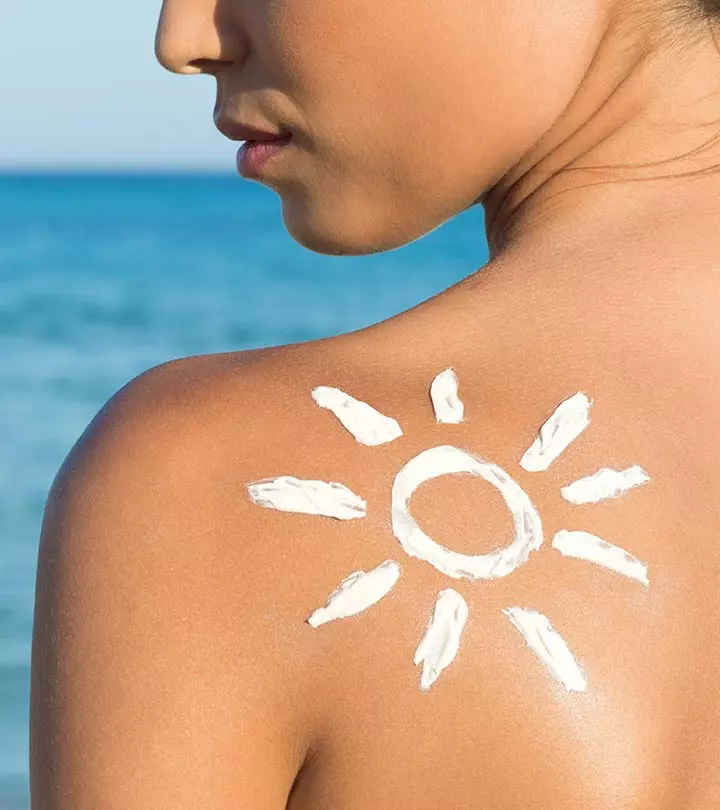
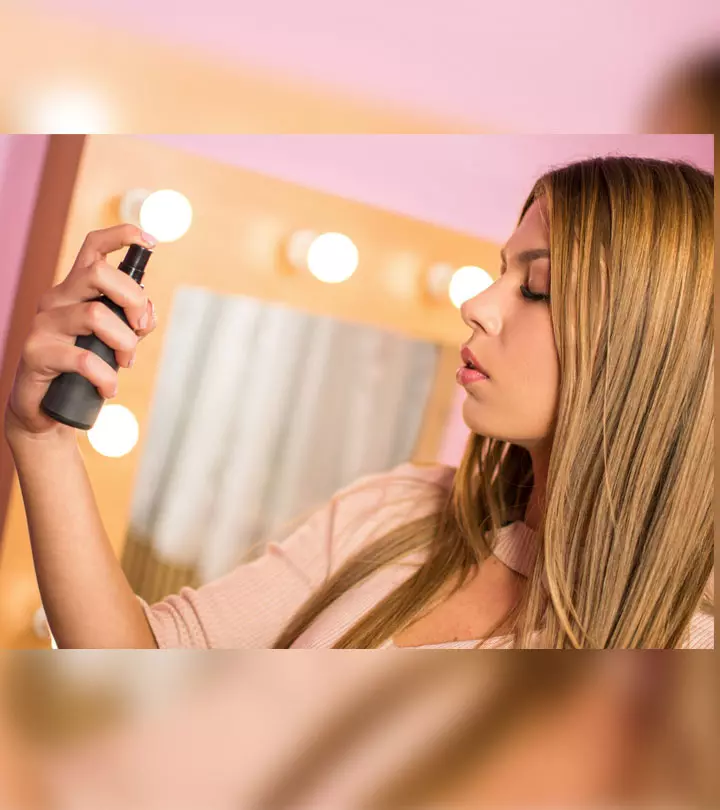

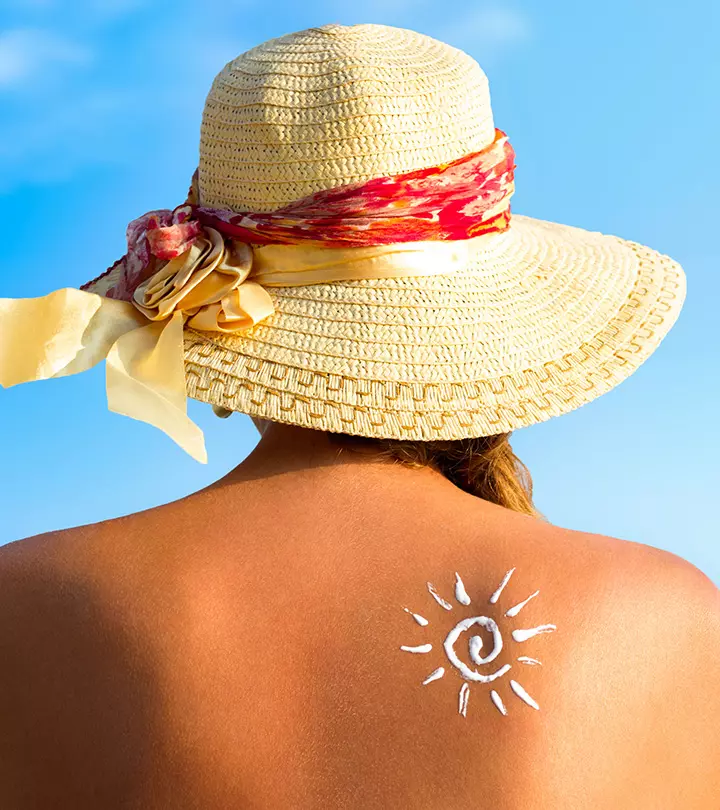
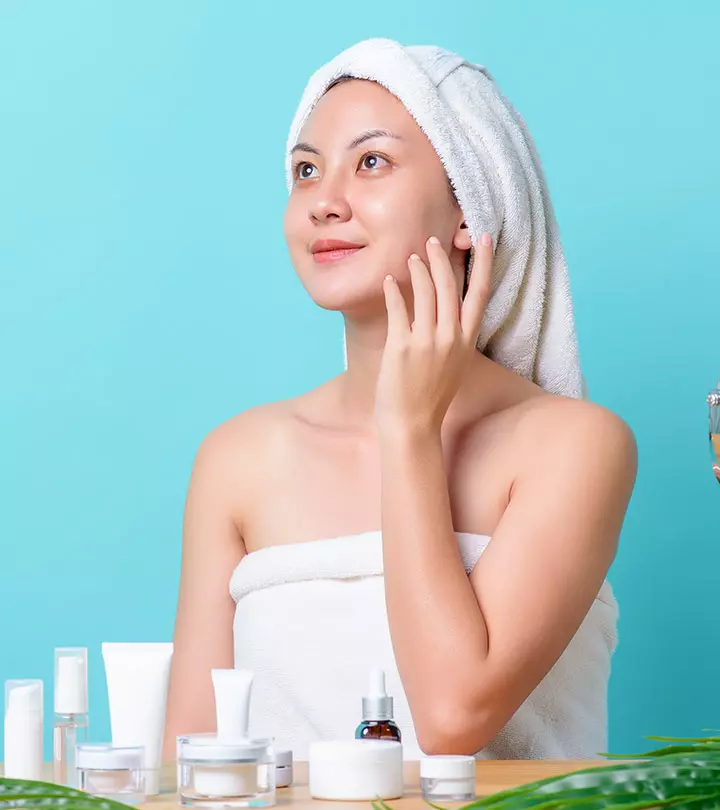
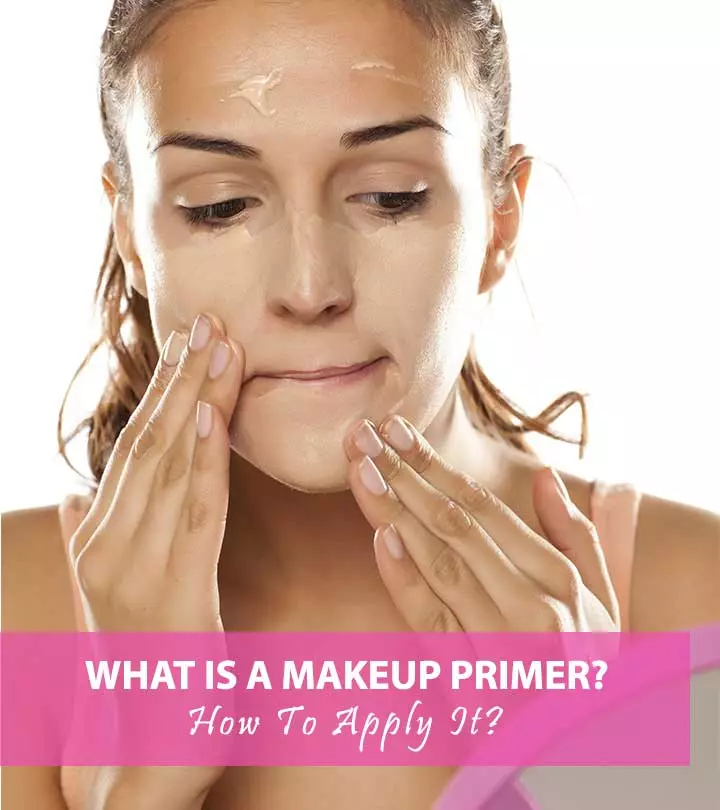
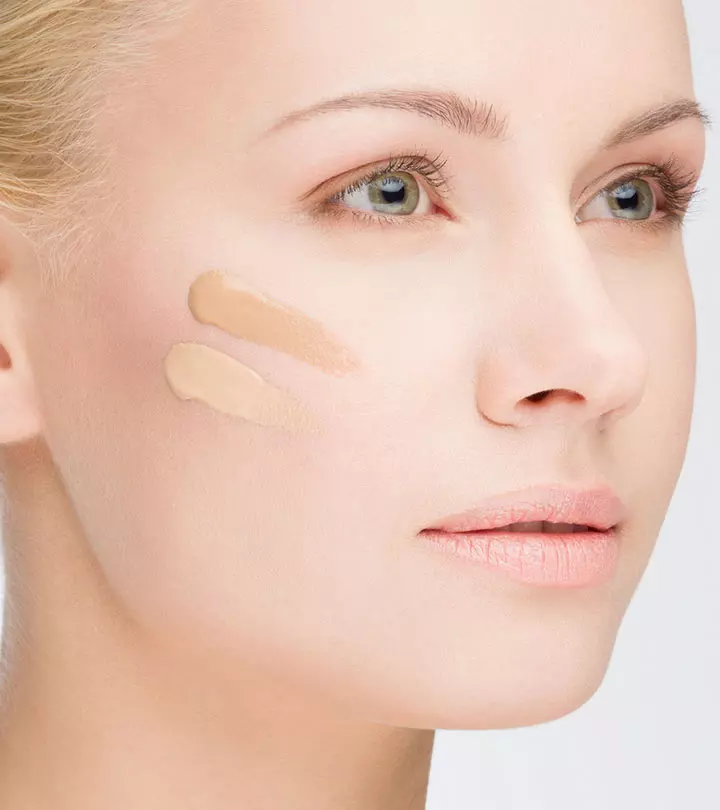
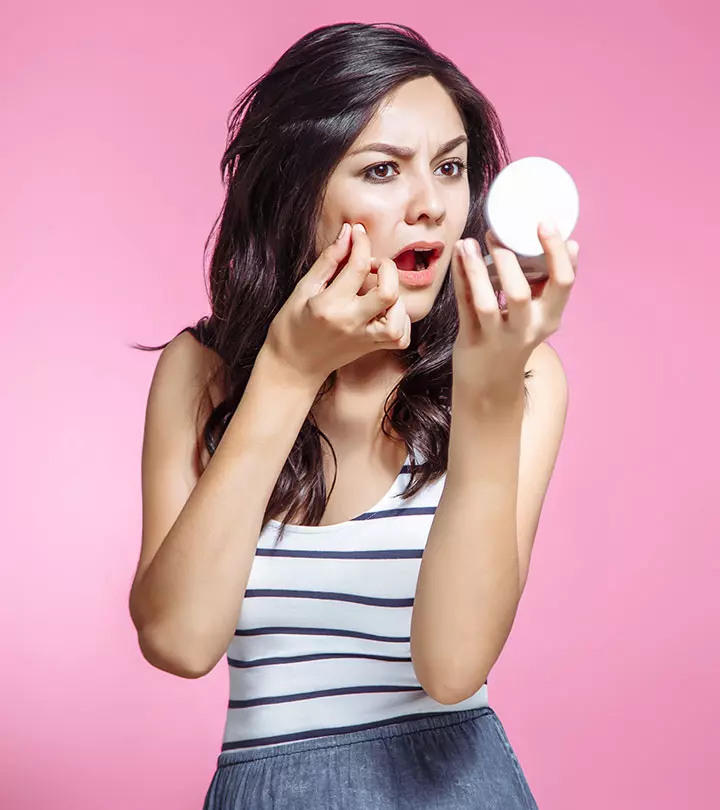
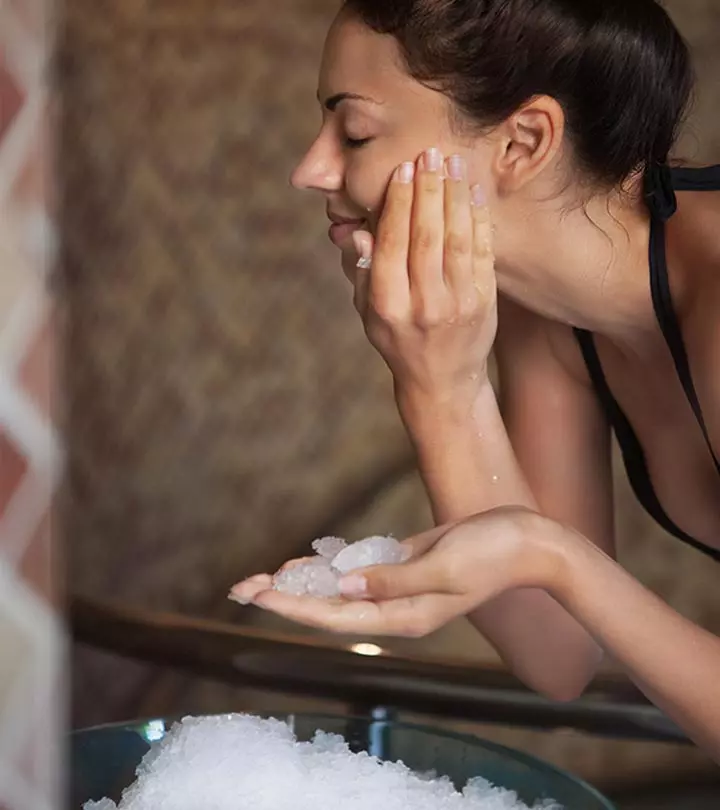
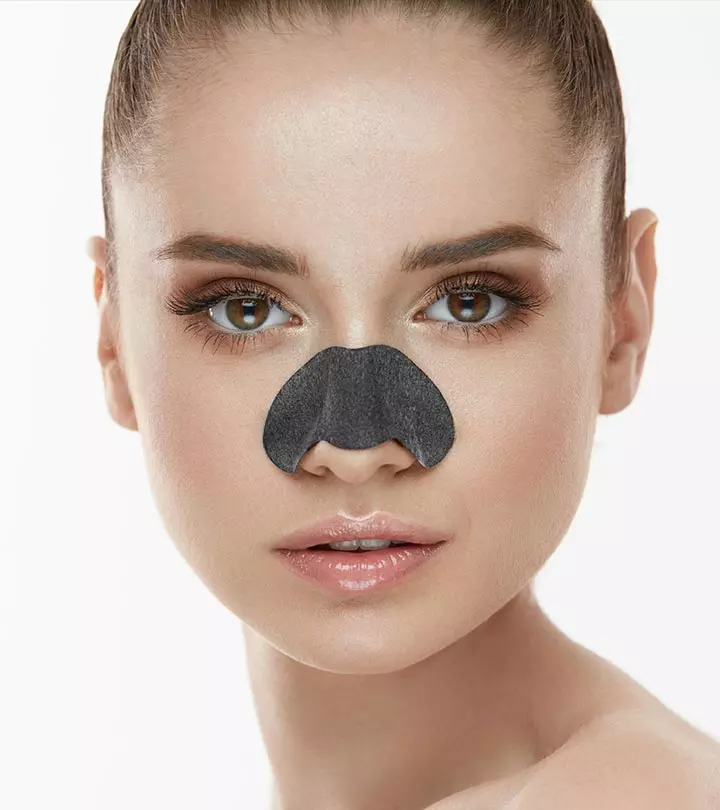
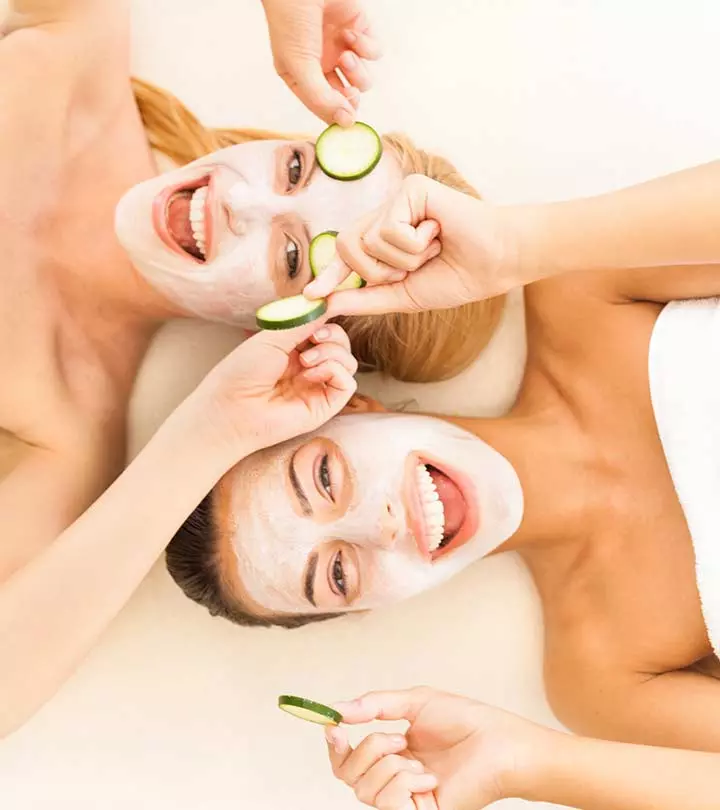
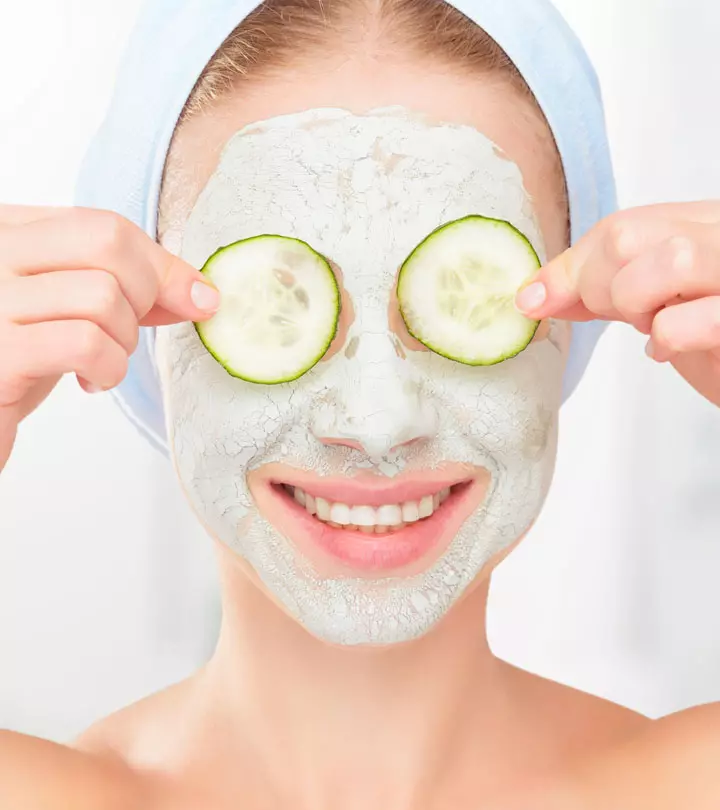


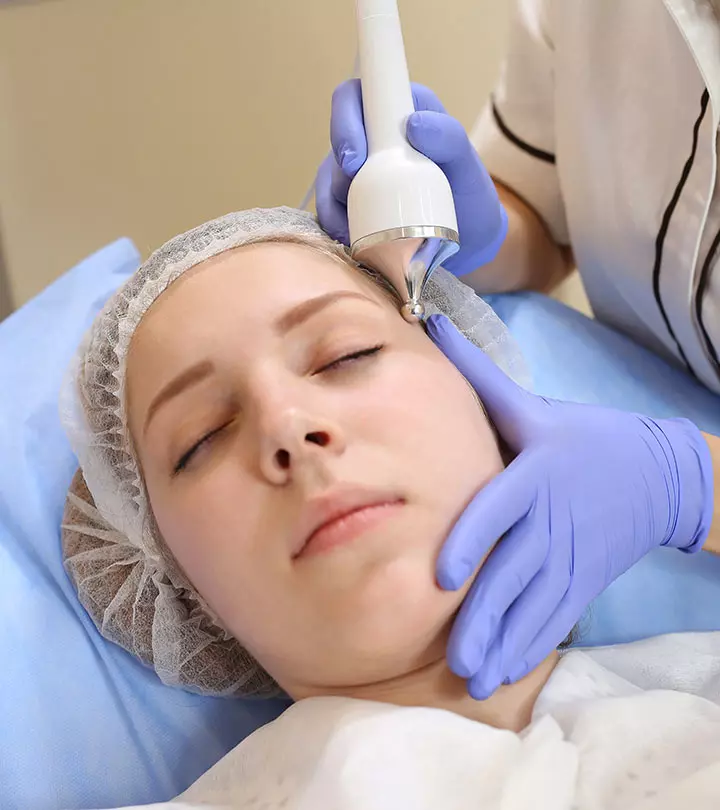

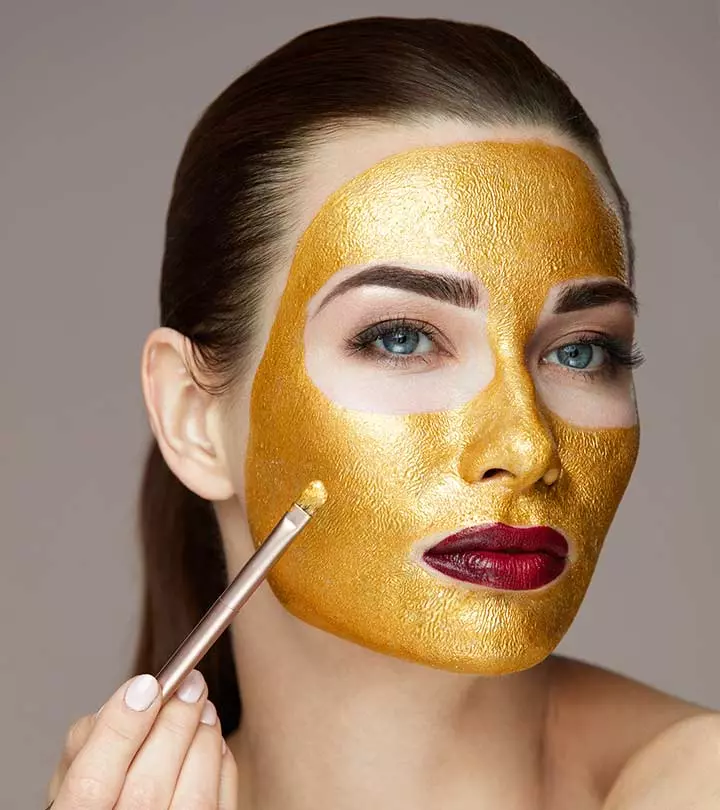
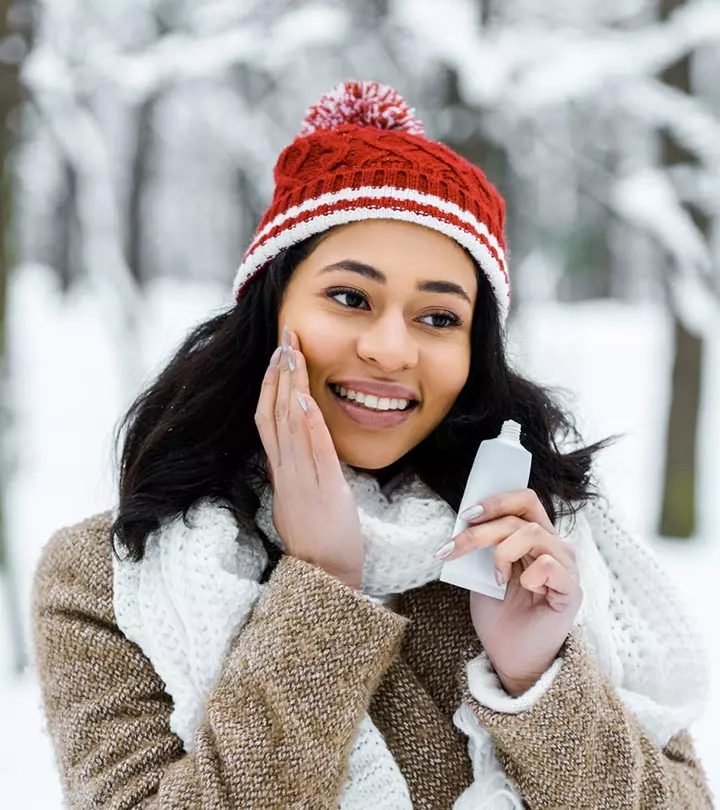
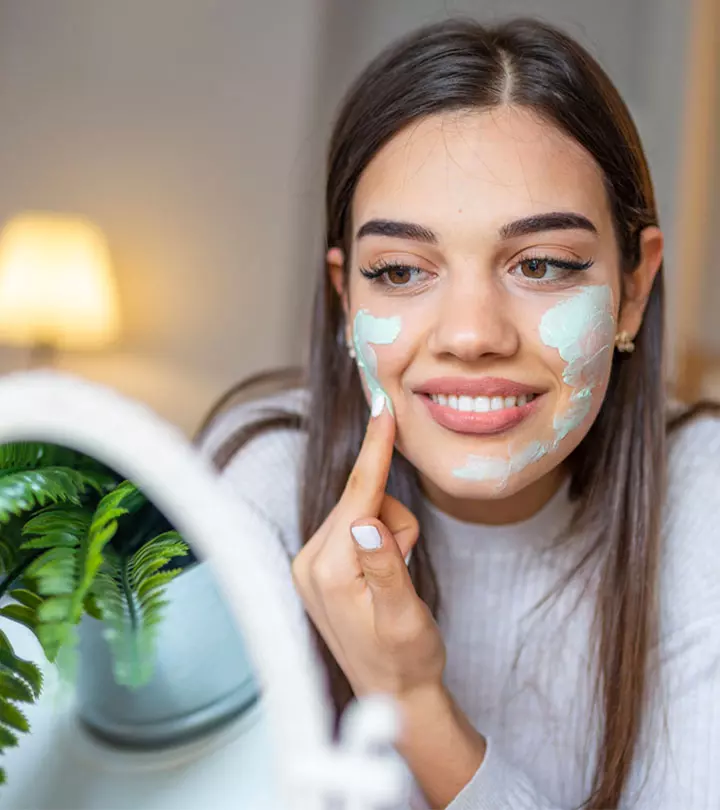
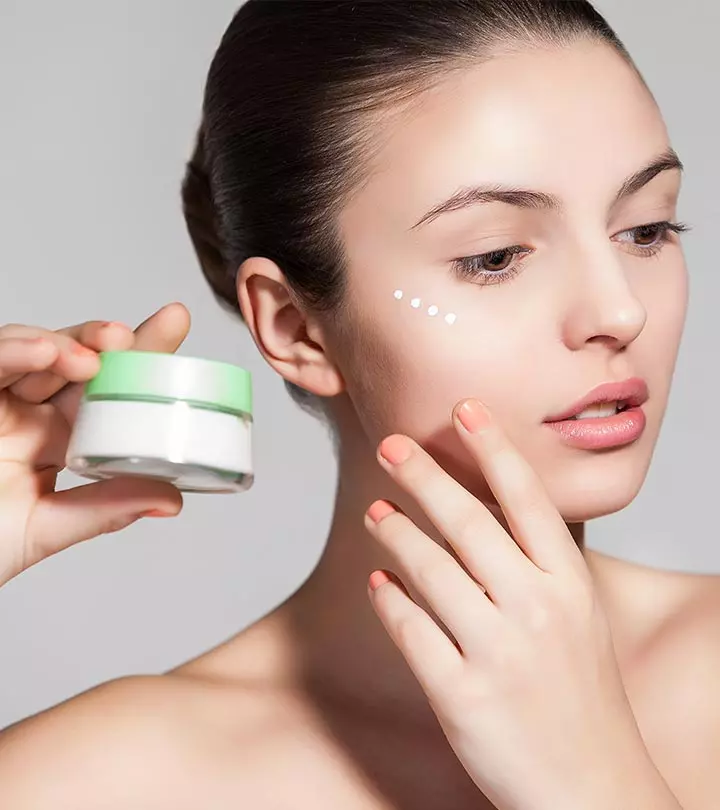
Community Experiences
Join the conversation and become a part of our empowering community! Share your stories, experiences, and insights to connect with other beauty, lifestyle, and health enthusiasts.